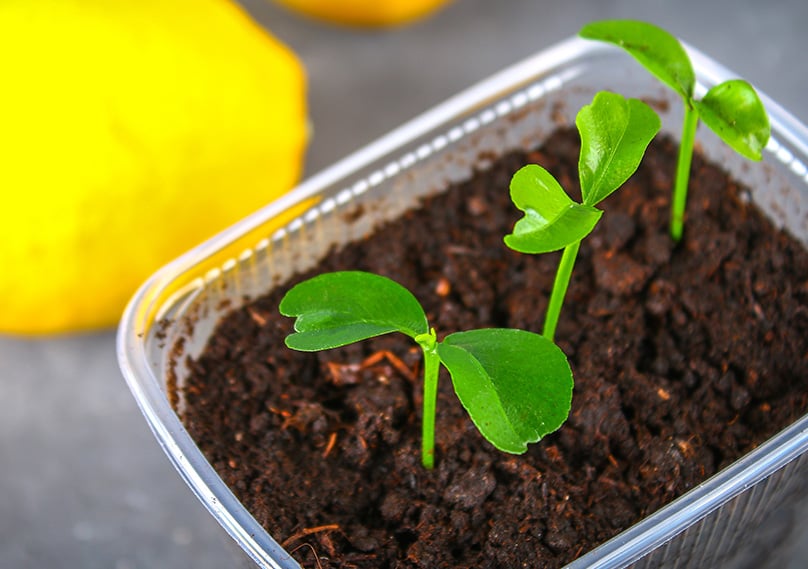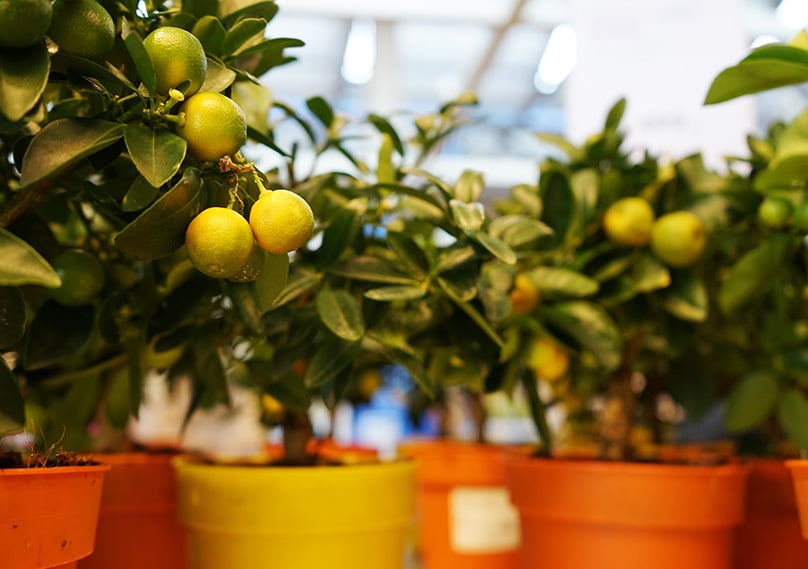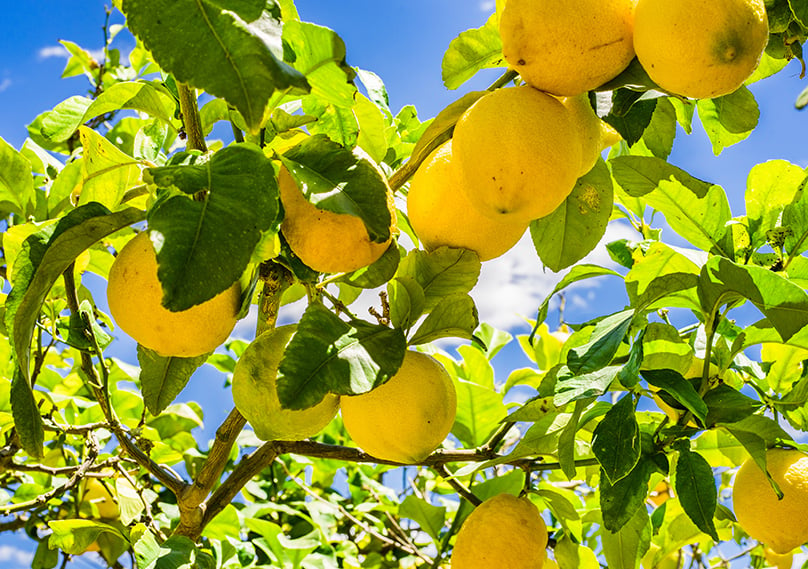There’s nothing quite as refreshing as the taste of lemon. Whether it’s freshly squeezed lemonade or a lemon juice squeezed on your favorite seafood dish, the taste and aromatic scent of this citrus fruit is delightful.
Wouldn’t it be nice to just grab a ripe lemon from a tree in your own garden instead of having to run to the grocery store whenever you get the craving for this delicious fruit?
If you’re interested in planting lemons, you’re In the right place! In this guide, we share some helpful tips that you can use to successfully plant and grow your very own lemon trees.
Quick Facts
| Fact Category | Information |
|---|---|
| Origin | Believed to have originated in China, northern Burma, or Assam |
| Genetic Origins | Result of a cross between citron and sour oranges |
| Introduction to Europe | Spread into Europe, particularly southern Italy, in the 2nd century AD |
| Introduction to the New World | Brought by Christopher Columbus in 1493 |
| Indoor Growing | Can grow between 3 to 5 feet tall indoors with proper care |
| Outdoor Growing | Can grow outdoors with adequate sunlight and well-draining soil |
| Watering | Require moist (not soaked) soil, and cannot tolerate water-logged conditions |
| Diseases | Prone to diseases like European brown rot |
| Pests | Commonly infested by pests like scale insects and aphids |
| Harvesting | Ready to harvest when they are 2 to 3 inches in size and are yellowish-green or solid yellow in color |
The History of Lemons
Before we share tips on how to plant and grow any type of produce, flower, tree, or shrub, we always like to provide a brief history of the flora we’re discussing. We feel that knowing more about the plant you’re growing helps you gain a better appreciation it.
Though the exact origin of the lemon tree isn’t known, historians believe that the first lemons grew in China, northern Burma, or Assam, a region of northeast India.
According to scientists, the very first citrus fruits began growing around 8 million years ago. Eventually, those trees created the first lemons. The results of a genomic study revealed that the citrus fruit is the cross between citron and sour oranges.
Archeologists estimate that lemons spread into Europe, southern Italy, specifically, in the second century AD; however, they were not widely cultivated, so they were quite rare and considered a valuable commodity. In ancient Rome, for example, the citrus fruit was so ubiquitous that it was considered a luxury that was only available to the elite.

In about 700 AD, lemon trees spread into Persia, and from there, the travels to Egypt and Iraq. The first literary recording of the citrus fruit dates back to the 10th century, where it was written about in an Arabic dissertation about farming.
In addition to being used for food, lemon trees were also used in Islamic gardens as a decorative plant. From 1000 and 1150 AD, the plants were widely distributed throughout the Arabian and Mediterranean regions.
It wasn’t until the 15th century AD that the first notable cultivation of lemon trees took place, where they were widely grown in Genoa for their food and ornamental value. In 1493, Christopher Columbus brought lemon seeds with him during his voyage to Hispaniola.
Thanks to the conquests of the Spanish, lemon seeds were spread throughout the New World. At first, lemons were primarily used for medicinal and decorative purposes. Fast forward to the 1800s, and lemon trees were extremely popular in warm U.S. locations, such as California and Florida.
The name of this citrus fruit is believed to be Middle Eastern, but it is known that the name lemon is derived from the word limon, an Old French word, and then the Italian word limone.
Tips for Planting and Growing Lemons
Now that we have some background information about lemons, let’s take a look at how you can successfully plant and grow this beloved citrus fruit. In this section, we share some handy tips that you can use to help you yield a healthy lemon crop in your own yard.
Seed Propagation
Like many other fruits, it’s pretty easy to propagate lemons from seed. However, while the process is rather simple, do note that you will need to have a bit of patience, as it does take time.
Also worth noting is that there’s a chance that you would get the exact same lemon as the fruit that you propagated the seed from.

With that said, here are some simple yet effective seed propagation tips:
- Choose a healthy, juicy, and tasty lemon.
- Slice the lemon and remove the pulp.
- Remove the seeds from the pulp and wash off any remaining pulp and sugar; planting seeds and that pulp and sugar attached to them can foster fungal issues, which will ultimately kill the seeds.
- Plant clean seeds immediately while they are still wet to increase the chances of germination.
- Fill up a small pot with an organic mixture of nutrient-rich peat moss and perlite or sand; alternatively, you could use an organic pasteurized soil blend.
- Use your finger to press several ½ inch holes into the soil.
- Plant seeds in each of the holes and cover with soil.
- Lightly moisten the soil; you want it to be damp, but you don’t want it to be soaked.
- Place a plastic wrap cover of the top of the pot to increase water retention and increase the temperature of the soil.
- Set the newly potted seeds into a warm, brightly lit area. An area that’s about 70 degrees F is perfect. If you can, set them on top of a refrigerator, as the heat the appliance generates will heat the soil and the seeds from the bottom.
- Check the soil every few days. Again, you want it to be moist, not soaked. If the top surface feels dry, water as needed.
- When seedlings emerge from the seeds, move the plastic wrap.
- Once the seedlings have multiple sets of leaves, transplant the plants to larger pots filled with a sterile potting soil and feed them with a potassium-rich water soluble fertilizer once or twice a month. Remember to keep the soil moist.
Indoor Lemons
It is possible to keep your lemon trees inside. As long as they receive the proper care, lemon trees make wonderful houseplants and will be quite happy as long. When grown indoors, lemon trees typically grow between 3 and 5 feet tall.
- If you intend on keeping your lemons indoors, make sure to transplant them into a pot that provides plenty of space for the roots to spread out and grow. The pot must also offer adequate drainage.
- We can’t stress this enough; lemons like water, but they cannot be left to sit in water-logged soil, as root rot will occur and the tree will die off. Place your tree in slightly acidic soil and fertilize it as needed; about once a month, on average.
- Keep your potted lemon tree in a warm, brightly lit location. The tree should receive at a minimum of 5 hours of sunlight a day. If you cannot provide the appropriate amount of sunlight, you may need to use fluorescent grow lights to ensure they get proper lighting.
- The temperature of the room should be about 70 degrees F during the day and 55 degrees F at night. If you meet these conditions, your indoor lemon trees should flourish.
- During the warmer months, move your lemon trees outdoors. Bees and other types of insects will pollinate the plant, which will increase the chances of fruit production, thanks

Outdoor Lemons
You can also grow your propagated lemons in your garden. Choose a location that receives adequate sunlight. Make sure that the soil is well draining.
If it’s clay-based, mix perlite or sand into organic, nutrient rich fertilizer and set the mixture into the hole you dig in the ground. The hole you set the plant in should be slightly shallower than the length of the root ball.
Once set into the hole, cover the root ball with soil and lightly tamp it down. Water the newly planted tree so that the soil is sufficiently wet. Place mulch over the top of the soil-covered root ball to increase moisture retention.

Once a week, deeply water your outdoor lemon tree. Remember, lemons like plenty of water, but they cannot become water-logged.
You can prune the tree to maintain its shape and height. Pruning should be done in the spring, before the height of the growing season. Do not prune an outdoor lemon tree in the winter, as doing so could leave the plant vulnerable to frost damage.
Lemon Tree Diseases and Pests
Lemon trees are prone to certain types of diseases and pests, which are the same as the diseases and pests that attack most varieties of citrus fruits.
European brown rot is a common disease that can affect lemons. If your tree is infected, the lemons will rot while they are still on the tree.
Scale insects are a common type of pest that can infest lemon trees. They colonize ono the leaves of the plant and appear as large white masses. Aphids can be another problem. These pests eat the base of the leaves, and as they munch, the leaves will start to curl and dry and eventually, they will fall off.
Harvesting Lemons
Lemons are ready to harvest when they turn a yellowish green or a solid yellow color, they are firm to the touch, and they are about 2 to 3 inches in size.
When it comes to harvesting, the size of the fruit is more important than the color. If you pick lemons before the reach an adequate size, even if they are yellow or greenish yellow, they won’t be as juicy and they’re likely to be extremely sour.
Lemon Tree FAQS
How long does it take for a lemon plant to bear fruit?
A lemon tree grown from seed can take anywhere from 3 to 6 years to bear fruit. However, if you’re planting a young tree, it typically begins to bear fruit when it’s about 3 years old.
Are lemon trees easy to care for?
Yes, lemon trees are relatively easy to care for. They require a well-drained soil, plenty of sunlight, regular watering, and occasional feeding with a citrus-specific fertilizer. However, they are susceptible to certain pests and diseases, so regular inspections and prompt treatments are needed to keep the tree healthy.
Where do lemon trees grow best?
Lemon trees thrive in warm, sunny climates. They do best in USDA hardiness zones 9 through 11. They also require well-drained soil. Indoors, they require a sunny spot, such as a south-facing window.
Do lemon trees need a lot of water?
While lemon trees do need regular watering to keep their soil consistently moist, it’s important not to overwater them as this can lead to root rot. Watering should be deep and thorough, occurring when the top 3 inches of soil becomes dry.
How many times a year do lemon trees produce fruit?
Lemon trees are capable of producing fruit year-round, but they typically have two major periods of fruiting in a year. The timing of these harvests can vary based on the climate and growing conditions.
How big is a 2-year-old lemon tree?
The size of a 2-year-old lemon tree can greatly vary depending on its growing conditions. However, on average, a 2-year-old lemon tree might be anywhere from 3 to 5 feet tall.

5 Comments
My Dawn Meyer Lemon. 10 years old
Last week the the leaves curled and died , basically over two day period .
Have pruned a third off , hoping to save it.
All leaves have now been removed.. very small fruit still green.
.d think that I an save it
Sorry, that should have been Dwarf Meyer Lemon.
The new Meyer lemons growing on the plant have black/brown spots on them. Is this a virus? What can I do to make the lemons fresh and healthy like the previous ones?
My lemon tree has yellow/black spots on the leaves and rust spots under the leaves. The leaves are falling off we have had a lot of rain is this the problem. What can I do to save the tree.
My indoor Lemon Tree is about 5 feet tall and is not producing lemons. My gardening experience (using tomatoes as an example) tells me to cut off 6 inches from the top of the tree. This should send the nutrients to the branches, encouraging fruits to appear.
Do you agree, or have any advice ?